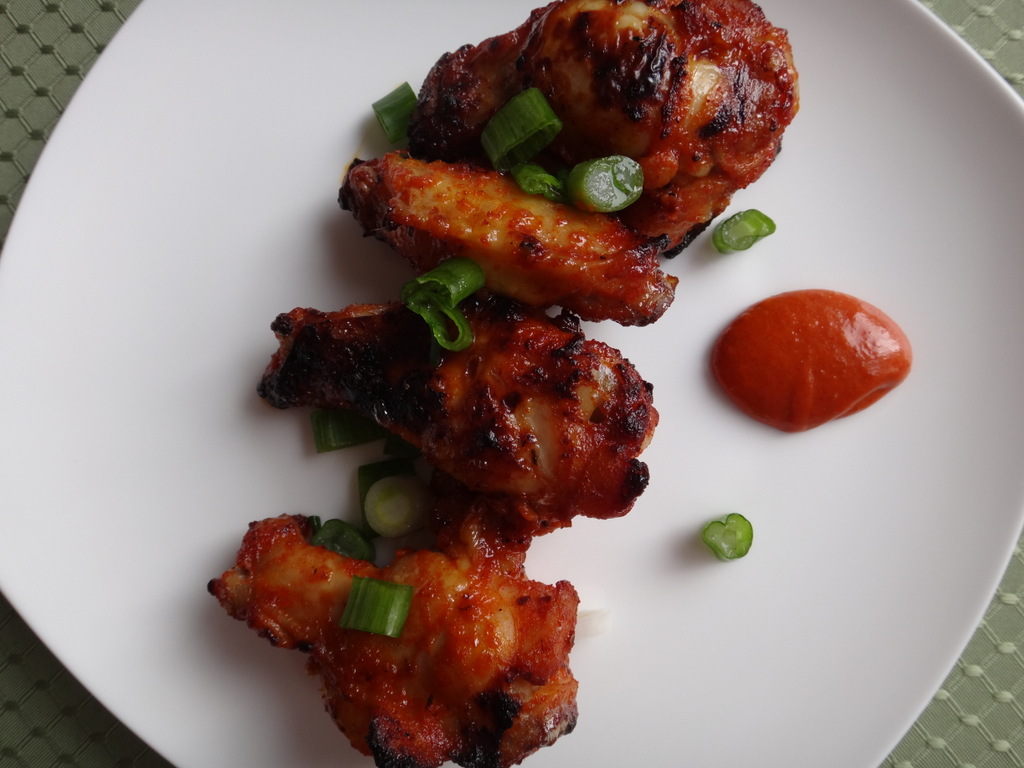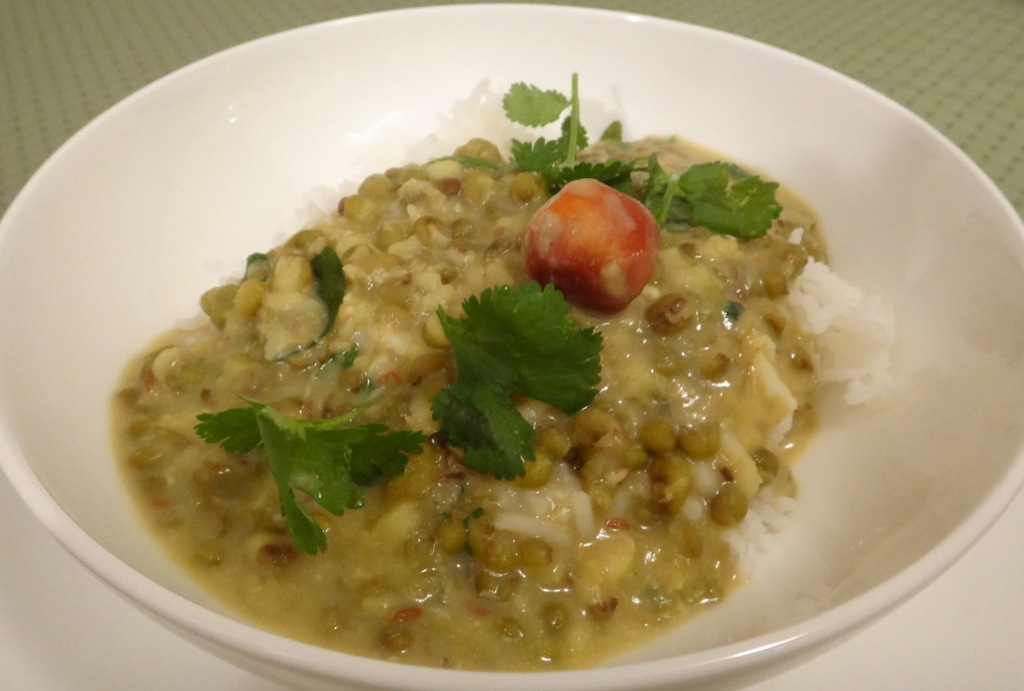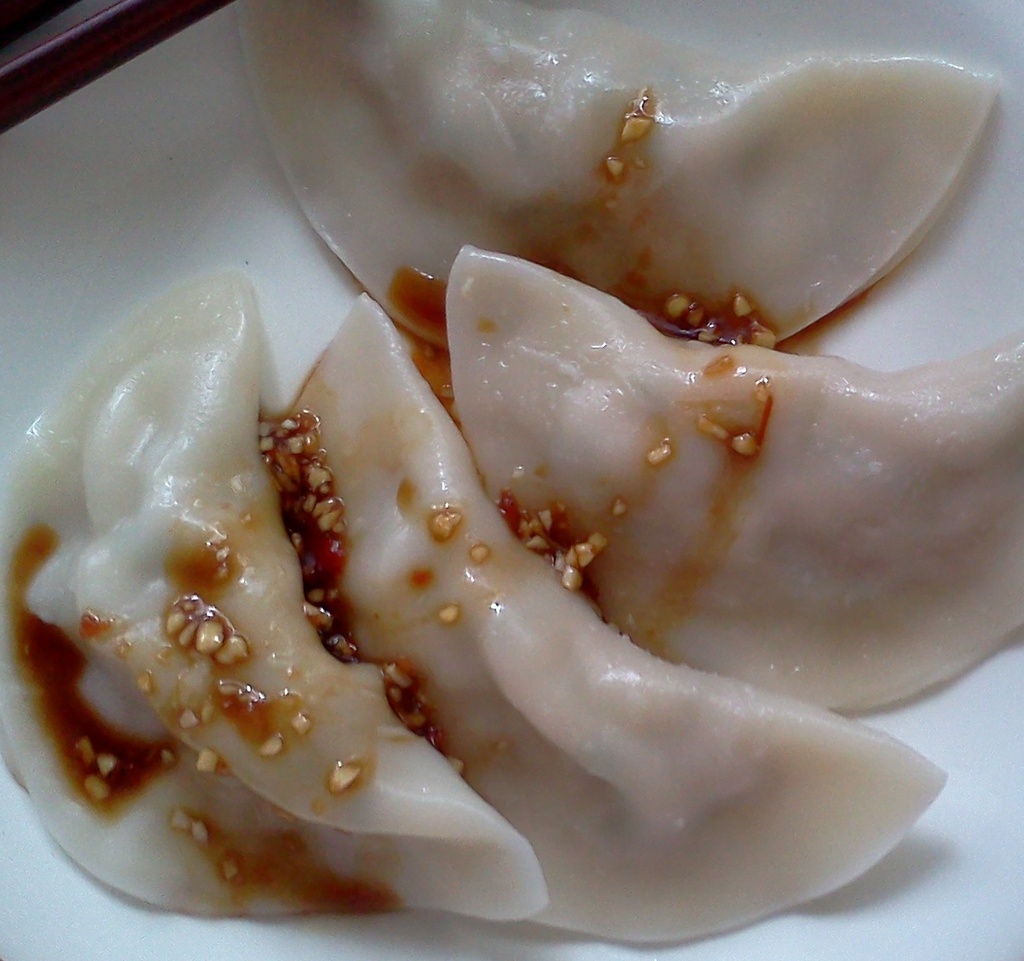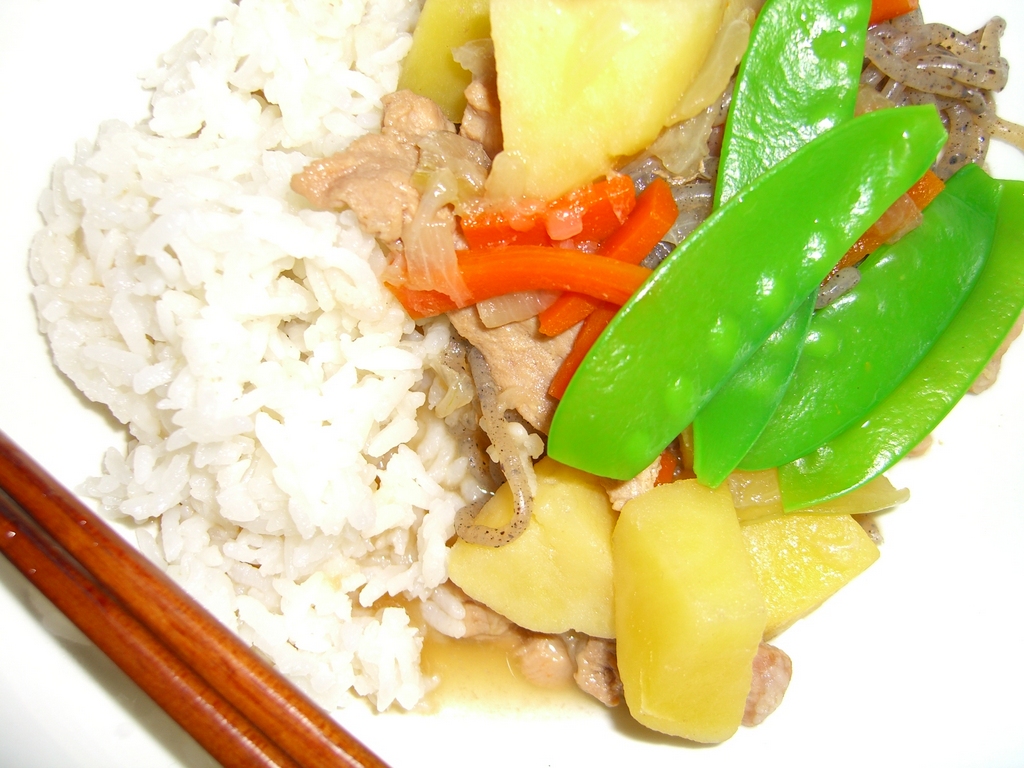posted by
Samar on
February 3, 2013

It has been a busy past few weeks at work so this is a rather short post. But a timely one. (Well, sort of!) Today, as some readers may know, is Super Bowl Sunday here in the US where millions will gather to watch a football game. And while I don’t possess a TV or even the slightest interest in football, there is no reason not to join the party (so to speak). According to the FT, it is second only to Thanksgiving as the US’s biggest eating day. And, judging by advertisements, the star attraction is the chicken wing, some 1.3 billion of which will be consumed today. Most will be of the conventional ‘buffalo’ sort. But for me the best wings by far are Korean-style ones. If you haven’t had these I suggest a quick trip to the nearest Koreatown where – if you’re lucky – there will be restaurants specializing in them (KyoChon and BonChon are two popular chains). Alternatively, you can try today’s recipe. Its easy and health (at least in that it involves no deep-frying, only broiling). Feel free to adjust the spice level. Also, the marinade makes a great dipping sauce so make some extra and set some aside if you like.
posted by
Samar on
January 25, 2013

Several weeks ago Mark Bittman wrote a column about dal in the New York Times. For someone from India that’s like writing about salt: “Dal!? Really? Dal is just about the most ordinary thing in the world, right? Still, I was a bit miffed that he’d gotten to it first. I’ve been meaning to post various dal recipes because, commonplace as it is, an Indian meal, at least in our house, is simply incomplete – even unthinkable – without it. More importantly, there are a zillion kinds of dal, some reaching heights that would put the most flavorful ramen broth (to give a random but trendy example) to shame.
posted by
Samar on
January 16, 2013
Its been a while since my last post. I should have been in Vietnam for the past week. Instead, owing to a family emergency, I ended up staying in Japan. And, no, while I was looking forward to a week of authentic banh mi and pho, you shouldn’t feel sorry for me. Food-wise, the past week couldn’t have turned out better. This post then is a bit of a rambling travelogue, starting with those new experiences alluded to in the title.
posted by
Samar on
January 2, 2013

One of the great things about visiting Japan is the variety of food to be had, including a plethora of “foreign” cuisines. Of course, with only around 2 million foreigners in a population of 130 million, “foreign” food here is nothing like, say, in the US. The clientele is exclusively Japanese (unless one is in a gaijin hotspot like Roppongi Hills in central Tokyo you can go days without spotting one!), so there is little by way of authentic ethnic cuisine. To be sure, food everywhere adapts to suit local tastes but, in my experience at least, nothing like in Japan (a phenomenon called nihonka (日本化), ka=change). Here, Kimchi is sweet (as is Indian food), Chinese bland, and Italian, well the menu below (from a typical “Italian” restaurant I recently visited) gives you an idea. I can’t read everything, but root vegetables such as daikon (大根) and renkon (蓮根), local varieties of mushrooms, and seafood not typically associated with Italian food feature prominently!
posted by
Samar on
December 27, 2012

In keeping with the last couple of posts on simple yet tasty dishes – and because I’m currently in Japan – here’s one which typifies Japanese home cooking: nikujaga (肉じゃが), literally meat and potatoes! That’s right. Contrary to what you might have learned from TV shows, most Japanese are not cooking – or eating – umami-laden food that took 5 days to make. In fact, more than anywhere else I’ve experienced, the emphasis is on convenience and speed. Even meat is almost always sold very thinly sliced so that it cooks rapidly. But with the right ingredients even meat and potatoes can taste good and this is a perfect example of Japanese comfort food. (Alas, I don’t have a better picture. But don’t let that put you off from making this dish!)







